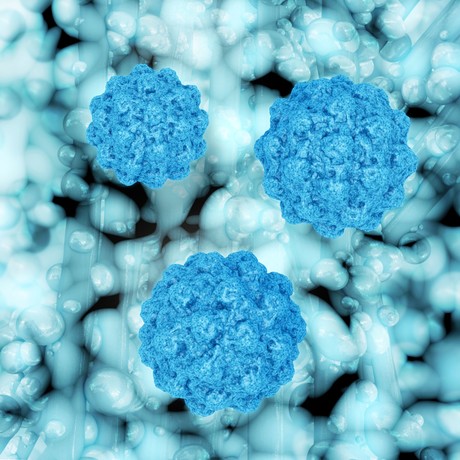Nucleic acids and immunity

Dr Michael Gantier, an ARC Future Fellow, is the Research Group Head, Nucleic Acids and Innate Immunity at the Hudson Institute in Melbourne.
After completing a PhD on RNA interference in Dublin (Ireland), Dr Michael Gantier moved to Australia to join the laboratory of Professor Bryan Williams.
In 2015, he established his independent laboratory at the Hudson Institute of Medical Research, to study how nucleic acids control the interface between host and pathogens, and how this can lead to inflammatory diseases.
Dr Gantier is presenting at this year’s Lorne Infection & Immunity Conference 2018 to be held from 14–16 February in Lorne, Victoria. He reflects on the latest developments in the field of infection and immunity and his lab’s current research focus and future plans.
Lab+Life Scientist: What’s your lab’s current focus?
Michael Gantier: We are working on understanding how nucleic acids (ie, DNA and RNA) are involved at the interface between infection and immunity. In addition to carrying genetic information, DNA and RNA are also critical regulators of immune responses to pathogens. Being universally conserved across all forms of life, nucleic acids are used from prokaryotes to eukaryotes to signal infection, and mount rapid responses limiting the impact of the pathogen on the infected host. This system universally relies on the capacity of the host to distinguish its own nucleic acids from those of the pathogen.
The last decade has revealed that defective capacity to distinguish between host and pathogenic nucleic acids was at the root of many infectious and auto-inflammatory diseases. In addition, nucleic acids can be differentially secreted in bio-fluids in chronic diseases, thereby presenting an unparalleled potential for diagnosis.
We are currently following up several projects that study the role and therapeutic potential of nucleic acids in infection and immunity. This includes: understanding how the immune system can also act to detect damaged or abnormal cells that have lost integrity of their normal genome, and the implication of this in the treatment of cancer cells, as well as in auto-inflammatory disease. In addition, my lab works on the development of small RNAs in circulation as biomarkers of chronic inflammation.
LLS: Were there any Eureka moments in your lab?
MG: My studies often seem to disprove what we originally intended to show (which I would not necessarily call Eureka moments!). However, it’s really satisfying when you understand what is going on. Recently, we showed that a widely used genetic system, known as the Cre-Lox, had the capacity to trigger activation of a strong immune response. Because this system has been very widely used across the community for the past 20 years, we tried to understand what was going on, and discovered that Cre damaged DNA was released from the nucleus to activate an immune sensor called cGAS. This work is significantly important for a number of other studies since it means that some of the findings might have been misinterpreted. We also had a bit of a Eureka moment when we discovered that Acriflavine, a topical antiseptic used to prevent wound infections during WWI, could prevent viral infections and also potentially treat bacteria with antibiotics resistance.
LLS: What do you consider to be the top three developments in the world of infection and immunology in the recent past?
MG: The converging demonstration of the role of the microbiota affecting most aspects of the immune system would probably be my top pick. Then, I would say the discovery of the importance of nucleic acid sensing and its consequence in several auto-immune disorders (eg, interferonopathies), but I am biased! And also, although this would not be directly infection and immunity, the discovery of genome editing with CRISPR-Cas9 and others — which has many implications for our research, but also in the capacity to target latent infections (although viruses will probably evade these approaches very rapidly).
LLS: Could you provide a brief outline of your talk at Lorne?
MG: I will talk about our recent work on the detection of damaged DNA by the immune system — ie, how the type of damage seems to impact which sensor is activated, and how viral oncogenes can potentiate sensing. I will also present some of our latest work on the horizontal amplification of inflammation through cell-cell communication — which may present novel therapeutic opportunities for the treatment of autoimmune disorders such as cutaneous lupus, and limit disease flares in systemic lupus erythematosus.
European Space Agency inaugurates deep space antenna in WA
The ESA has expanded its capability to communicate with scientific, exploration and space safety...
Black hole collision supports Hawking's landmark theory
Astrophysicists have witnessed a collision between two black holes that was so loud, they were...
Uncovering differences in wild and domesticated crops
Researchers have revealed insights into the genetic make-up of wild varieties of common crops...





